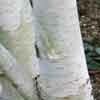 |
BETULA
utilis var. jacquemontii 'Doorenbos' |
|
|
|
||
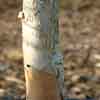 |
BETULA
utilis var. jacquemontii
'Fastigiate' |
 |
|
|
||
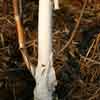 |
BETULA
utilis var. jacquemontii 'Grayswood Ghost' Although often requested by name, I find this cultivar slow growing and less reliable than most. The leaves are larger than those of 'Doorenbos' and potentially superb slightly creamy white bark, but seemingly not as easy to grow. |
|
|
|
||
 |
BETULA
utilis var. jacquemontii 'Jermyns' The vivid white bark of this vigorous, Hillier named selection is retained into maturity, whilst it has the added attraction of very long catkins (to 17cm). This one is also distinctive in habit. I have likened it to a "conference pear" in that it is considerably taller than it is wide, with its greatest width at the bottom of the canopy. Different proportions therefore to the classic forms, where the widest point will typically be about half way up the canopy. We like to use this for vertical accent where we want to gain as much height as possible as quickly as possible. See it in our Winter Garden. |
|
|
|
||
| BETULA
utilis var. jacquemontii 'Knightshayes' Selected at my favourite National Trust Garden, Knightshayes, in Devon, the origin of this tree is unknown. It is however unique in this company since it has a semi-pendulous growth habit. It develops an upright leader with strongly weeping side branches which creates a very unusual and dramatic effect. The bark is dazzling white. |
||
|
|
||
 |
BETULA
utilis var. jacquemontii
'Moonbeam' Hence, others that are worth considering for a more restricted space include 'Trinity College' (though this has good vigour and will gain good height quickly - "tall and thin" by comparison therefore) and 'Fastigiate' (this last one being the narrowest). If you really need to keep the size down, then I would recommend the largely unknown B. ermanii 'Mount Apoi'. |
|
|
|
||
| BETULA
utilis var. jacquemontii 'Ramdana River' Selected from seed originally collected from the Ramdana River area in Uttar Pradesh, India in 1991 this has become an absolute favourite of mine. It has superb bark as would be expected of any selection of this subspecies, so it's the detail that determines its quality. For me the white bark has a warmth to it. It is a reliable and non fussy grower, readily making a tidy, symmetrical shape that is much less affected by our exposed site. See it in our Winter Garden. |
||
|
|
||
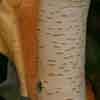 |
BETULA utilis
var. jacquemontii 'Silver Shadow' |
|
|
|
||
| BETULA
utilis var. jacquemontii 'Snow Leopard' Although (as you can see from our collection listed on this page) there are a great many cultivars attributed to this iconic subspecies, most are of unknown origin and may even be hybrids. This selection is a clone from a group of seedlings collected by Oleg Polunin in the wild near Sonamarg in Jammu & Kashmir, India. It is an area inhabited by the elusive snow leopard - hence the name! Pure white bark peels dramatically to reveal a smooth white underlayer. Gorgeous. See it in our Winter Garden. |
||
|
|
||
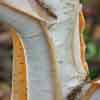 |
BETULA
utilis var. jacquemontii 'Snow Queen' A showy tree with a gleaming white trunk which is apparent from an early age. Some authorities say that this is the same as 'Doorenbos'...and for sure they are very similar. I have kept mine separate on the basis that once combined, they could never be told apart. Perhaps that is answer enough in itself. Whatever the case, the pair of them are arguably some of the best white birches when considering ease of culture and purity / intensity of bark colour. See it in our Woodland Walk. |
|
|
|
||
 |
BETULA
utilis var. jacquemontii
'Trinity College' |
|
|
|
||
 |
BETULA utilis
var. occidentalis 'Kyelang' Pure white peeling bark as one would expect, but also the white resinous buds are conspicuous in winter. The late Kenneth Ashburner selected it from seed collected by the Indian Forestry Service in Kyelang, NW Himalaya in the mid 1970s. However it seems that consideration is now being given as to whether this is actually a jacquemontii selection after all. Whatever the case, my display plant has made a delightful round headed small tree with gorgeous bark. |
|